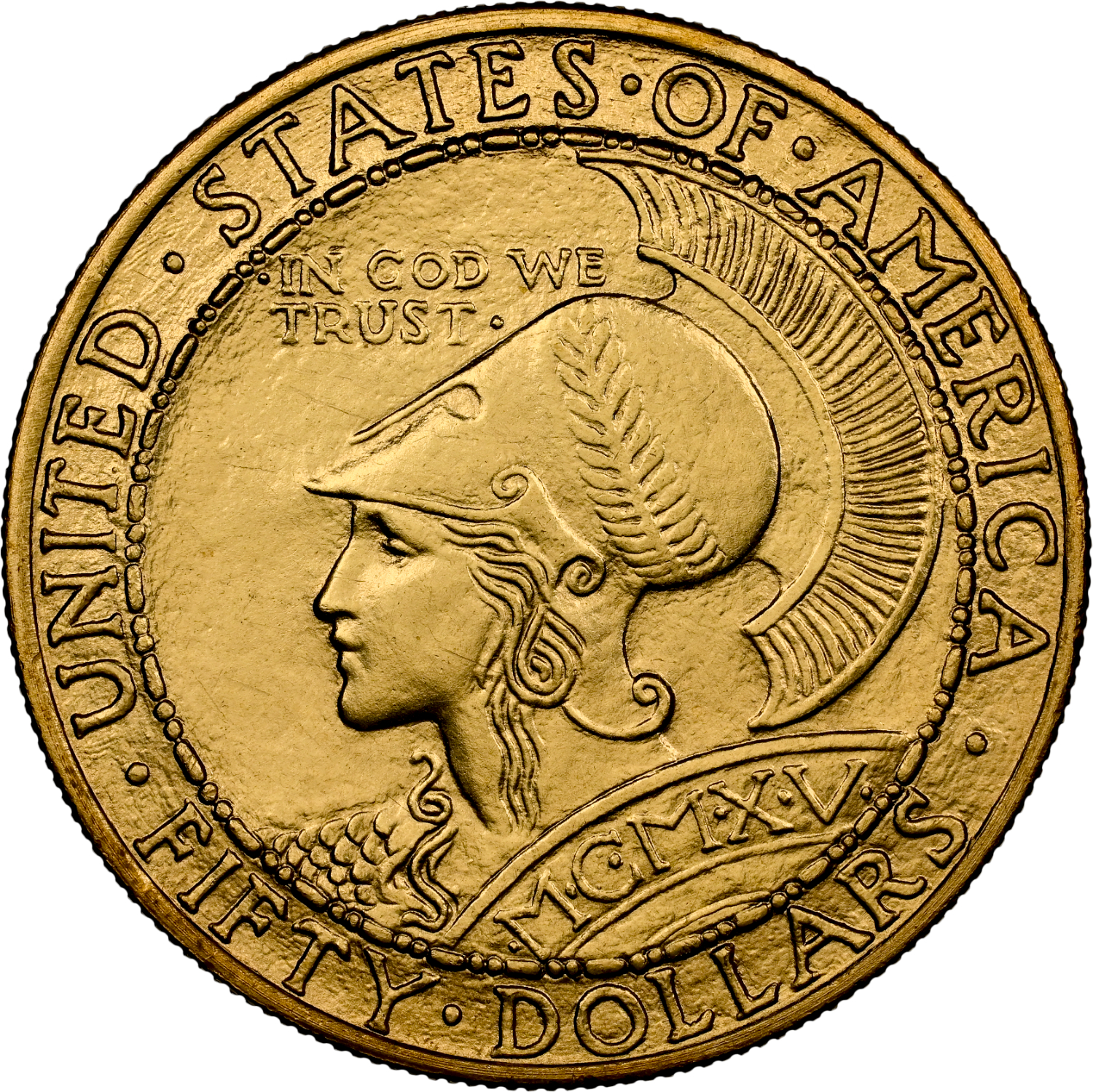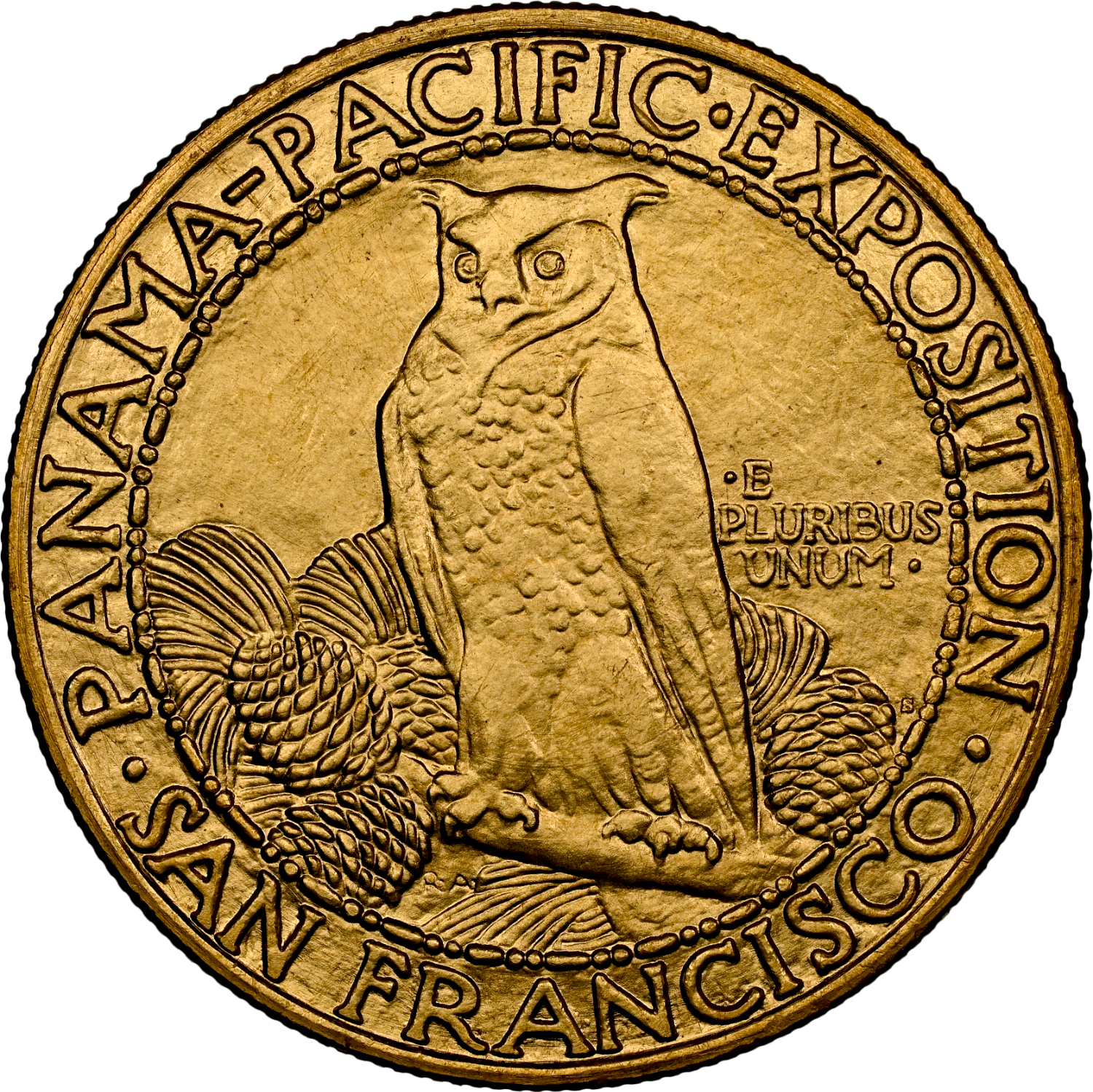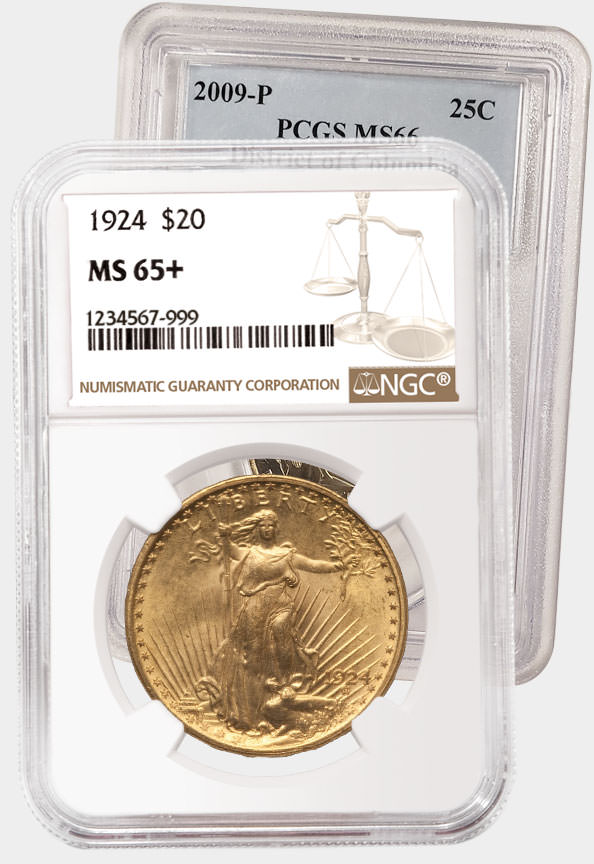The Panama Canal, which remains one of the engineering marvels of the modern age, was completed in August of 1914. To celebrate this achievement, Congress authorized the Panama-Pacific International Exposition of 1915. This Expo, held in San Francisco, was also a celebration of the city’s recovery from the devastating earthquake of 1906. In addition to the expo, Congress authorized a series of commemorative coins honoring the exposition. These were to include a half dollar, gold dollar, $2.5 gold piece, and two different $50 gold pieces; one round, and one octagonal. The bill authorizing these issues was signed into law on January 16, 1915. New York artist Robert Aitkin was selected to design both of the $50 gold pieces. He was a well-regarded sculptor, but had never before designed a coin. His designs, while not inherently American, was a rather successful attempt to obtain classic Greek motifs on modern coinage.
Aitkin’s obverse depicts a left-facing bust of Minerva, the Roman goddess of, among other things, wisdom, skill, and agriculture. She wears a crested helmet, pushed back to signify peaceful intentions—a symbol of American sentiment towards a Europe deeply embroiled in the carnage of World War I. The date appears in Roman numerals—MCMXV—at the top of Minerva’s shield. The entire central design is surrounded by a long and short-beaded motif, also adapted from Greek design. On the octagonal pieces, the central design was smaller, and stylized dolphins were placed in each of the eight corners on both obverse and reverse. UNITED STATES OF AMERICA and FIFTY DOLLARS appear on the periphery of the obverse. IN GOD WE TRUST can be seen above Minerva’s head.
The coins’ reverse depicts an owl perched on a Ponderosa Pine, surrounded by cones. Owls were sacred to Minerva, and the bird is commonly recognized as a symbol for wisdom. The beaded border is repeated again on the reverse, separating the central design from the legends PANAMA PACIFIC EXPOSITION and FIFTY DOLLARS around the periphery. E PLURIBUS UNUM can be seen to the right of the owl.
A special 14-ton press was transported from the Philadelphia Mint to San Francisco to strike the coins. In total, 1,500 of both the octagonal and round were struck. Despite the popularity of the large size and design, only 645 of the octagonal, and 483 of the round were sold. This was likely due to the extremely high cost of the coin. Finding buyers at $100 for a $50 gold coin when wages were low, interest in numismatics was insignificant, and political and economic uncertainty high, was a difficult task at best.







